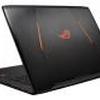Asus Live Update software installed on laptops and PCs from the Taiwanese manufacturer contained a backdoor between June and November 2018. Malicious folks this way could install malware on specific systems. The malware was targeted at specific mac addresses though?
Kaspersky discovered the presence of the backdoor in January and informed Asus at the end of that month. According to security researchers, the update software was infected with a backdoor in the timeframe of June up-to November 2018. Kaspersky has named this attack 'ShadowHammer' and has put a tool online for users to check whether their Asus laptop contains the backdoor.
They also created a page on which users can verify if their mac address is included on the list of targets. ASUS is believed to have pushed this malware to hundreds of thousands of customers through its trusted automatic software update tool after attackers compromised the company's server and used it to push the malware to machines. From the report posted at motherboard.vice.com:
Researchers at cybersecurity firm Kaspersky Lab say that ASUS, one of the world's largest computer makers, was used to unwittingly to install a malicious backdoor on thousands of its customers' computers last year after attackers compromised a server for the company's live software update tool. The malicious file was signed with legitimate ASUS digital certificates to make it appear to be an authentic software update from the company, Kaspersky Lab says. ASUS, a multi-billion dollar computer hardware company based in Taiwan that manufactures desktop computers, laptops, mobile phones, smart home systems, and other electronics, was pushing the backdoor to customers for at least five months last year before it was discovered, according to new research from the Moscow-based security firm.
The researchers estimate half a million Windows machines received the malicious backdoor through the ASUS update server, although the attackers appear to have been targeting only about 600 of those systems. The malware searched for targeted systems through their unique MAC addresses. Once on a system, if it found one of these targeted addresses, the malware reached out to a command-and-control server the attackers operated, which then installed additional malware on those machines. Kaspersky Lab said it uncovered the attack in January after adding a new supply-chain detection technology to its scanning tool to catch anomalous code fragments hidden in legitimate code or catch code that is hijacking normal operations on a machine. The company plans to release a full technical paper and presentation about the ASUS attack, which it has dubbed ShadowHammer, next month at its Security Analyst Summit in Singapore.
Hackers Hijacked ASUS Software Updates and Installed Backdoors on Many PC's and Laptops

